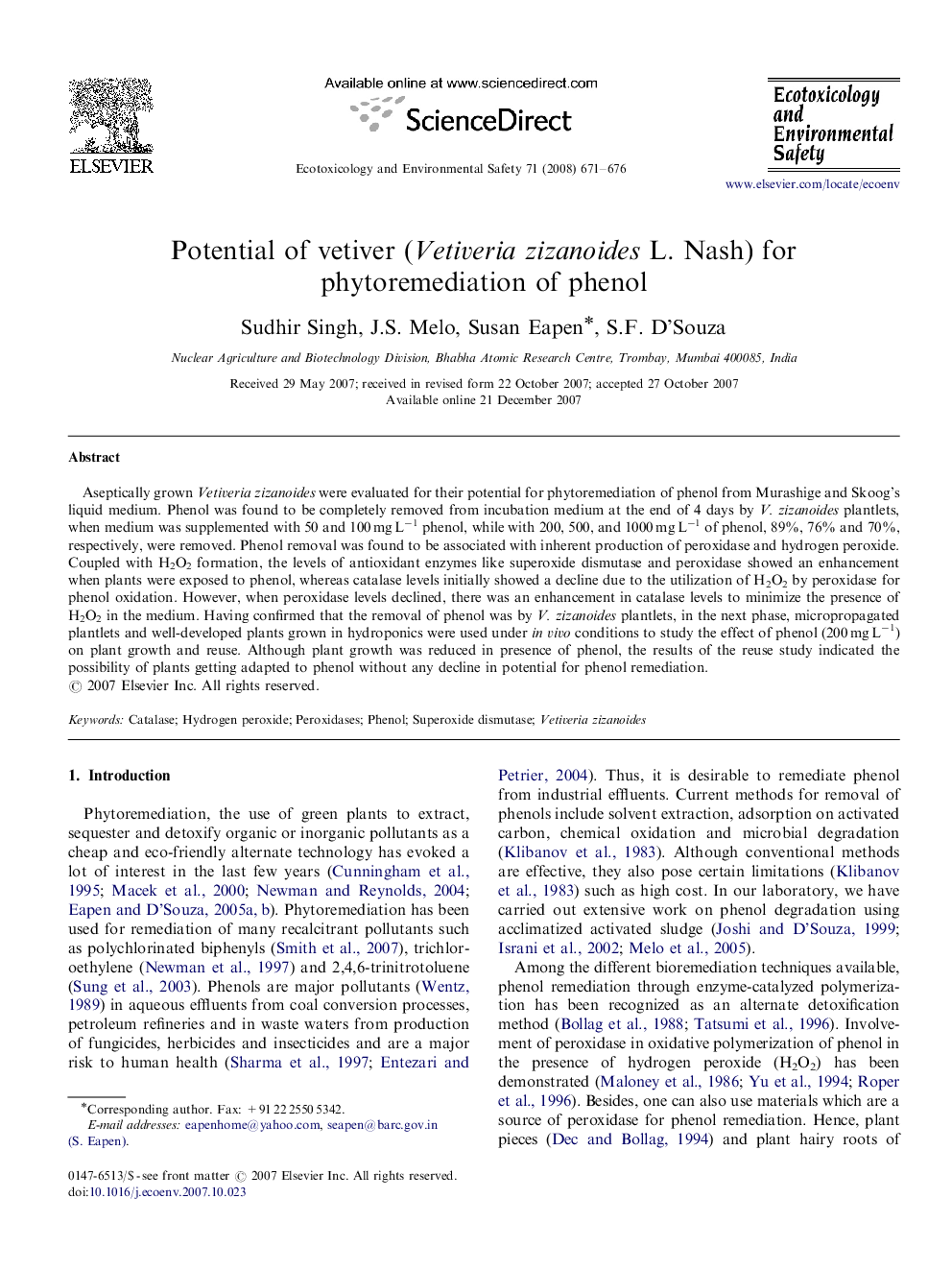| Article ID | Journal | Published Year | Pages | File Type |
|---|---|---|---|---|
| 4421800 | Ecotoxicology and Environmental Safety | 2008 | 6 Pages |
Aseptically grown Vetiveria zizanoides were evaluated for their potential for phytoremediation of phenol from Murashige and Skoog's liquid medium. Phenol was found to be completely removed from incubation medium at the end of 4 days by V. zizanoides plantlets, when medium was supplemented with 50 and 100 mg L−1 phenol, while with 200, 500, and 1000 mg L−1 of phenol, 89%, 76% and 70%, respectively, were removed. Phenol removal was found to be associated with inherent production of peroxidase and hydrogen peroxide. Coupled with H2O2 formation, the levels of antioxidant enzymes like superoxide dismutase and peroxidase showed an enhancement when plants were exposed to phenol, whereas catalase levels initially showed a decline due to the utilization of H2O2 by peroxidase for phenol oxidation. However, when peroxidase levels declined, there was an enhancement in catalase levels to minimize the presence of H2O2 in the medium. Having confirmed that the removal of phenol was by V. zizanoides plantlets, in the next phase, micropropagated plantlets and well-developed plants grown in hydroponics were used under in vivo conditions to study the effect of phenol (200 mg L−1) on plant growth and reuse. Although plant growth was reduced in presence of phenol, the results of the reuse study indicated the possibility of plants getting adapted to phenol without any decline in potential for phenol remediation.
